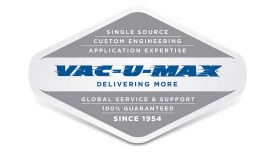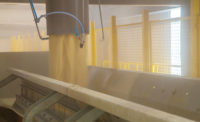History
The standard became effective on Sept. 7, 2015. It outlines the general requirements for controlling combustible dust hazards and refers to NFPA’s five industry- or commodity-specific standards when applicable: NFPA 61: Standard for the Prevention of Fires and Dust Explosions in Agricultural and Food Processing Facilities; NFPA 484: Standard for Combustible Metals; NFPA 654: Standard for the Prevention of Fire and Dust Explosions from the Manufacturing, Processing, and Handling of Combustible Particulate Solids; NFPA 655: Standard for the Prevention of Sulfur Fires and Explosions; and NFPA 664: Standard for the Prevention of Fires and Explosions in Wood Processing and Woodworking Facilities
NFPA 652 complements NFPA 654 by providing more specific guidelines on general dust combustibility and when to use those standards for all industries. The standard emphasizes the need for both fire protection and explosion protection to a greater degree than NFPA 654.
Why this standard is important
NFPA 652 introduces a new term, Dust Hazard Analysis (DHA), which is geared toward factories involved in basic processes that generate combustible dusts collected by simple dust collectors. NFPA 652 is now the starting point for defining a combustible dust and its hazards
NFPA 652 provides a detailed guide for a hazard analysis on a dust collection system in its appendix. The standard also contains retroactive requirements for a DHA. Now, all existing systems are required to have a DHA, and the time limit to perform this analysis is three years from the date of issuance of the standard, October 2015.
Hazards
A dust explosion is the rapid combustion of fine particles suspended in the air, often but not always in an enclosed location. Dust explosions can occur where any dispersed powdered combustible material is present in high enough concentrations in the atmosphere or other oxidizing gaseous medium such as oxygen.
Combustible dust materials include agricultural products, such as egg whites, powdered milk, cornstarch, sugar, flour, grain, potato, rice and more; metals, such as aluminum, bronze, magnesium, zinc and more; chemical dusts, such as coal, sulfur and more; pharmaceuticals; pesticides; rubber; wood; textiles; and plastics
The U.S. Chemical Safety Board conducted an in-depth study that identified 281 combustible dust incidents between 1980 and 2005 that killed 119 workers, injured 718, and extensively damaged industrial facilities.
Target industries
Any facility handling/generating dusts, powders, or materials that during processing are found to break apart into smaller pieces may in fact be dealing with a combustible particulate solid. This means that these facilities are required to determine if the material they handle is combustible or explosible
These NFPA standards apply to all facilities and operations that manufacture, process, blend, convey, repackage, generate, or handle combustible dusts.
What must employers do to protect employees?
The standard’s general requirements state that a facility owner or operator is accountable for the following when the potential for combustible dust is present: detect the “combustibility and explosibility hazards of materials;” identify and evaluate fire, flash fire and explosion hazards; manage the hazards; train affected individuals about the hazards.
Updated housekeeping procedures are often the first actions taken to combat excessive dust accumulation in rooms and buildings. But cleaning dusty areas with compressed air can create combustible dust clouds in areas that are being cleaned.
If possible, the facility should work to contain and collect combustible dust by preventing fugitive dust from discharging from equipment and using an effective dust collection system throughout the processes handling combustible dust.
If it’s not feasible to prevent the discharge of fugitive dust into a room or building, other means of protection or hazard mitigation should be implemented. NFPA 652 states that any building or room where a dust deflagration hazard exists should be protected using venting systems that comply with NFPA 68.
Exhaust air from equipment should only be directed outside and not into the room unless specific guidelines are met. All central vacuum systems should be equipped with tools and attachments constructed of metal or static dissipative materials and all vacuum hoses should be properly grounded.
A management system that monitors how hazards relating to combustible dust are being controlled should be developed. This system must include Management of Change (MOC) procedures to be implemented prior to any proposed changes to materials, equipment, technology, procedures, and job tasks.
NFPA 652 also requires training for employees and contractors on general safety regarding the hazards associated with combustible dust as well as any job-specific training relating to their work environment.
Key Definitions
Hazard Identification – Identifying the locations and equipment where explosion and flash-fire hazards could exist, involving fine particulate solids and dusts
Laboratory Testing – The Dust Hazard Assessment is based on results of tests on materials representative of the combustible particulate solids and dusts that are present in the equipment and could be present in the workplace
Dust Hazard Analysis (DHA) – DHA is required if materials handled and processed have been identified as combustible and/or explosible. DHA is a systematic review to identify and evaluate potential fire, flash fire, and explosion hazards associated with the presence of combustible particulate solid(s) in a process or facility. DHA must be conducted by an expert with demonstrated ability to deal with hazards related to processing and managing combustible particulate solids. For existing processes the owner/operator shall schedule the DHA to be completed within three years of the issue date of NFPA 652. For new construction or modifications in excess of 25 percent of original cost, DHA shall be completed as part of the project.
Dust Hazard Management – Owner/operator of the facility with potentially combustible dust shall be responsible for managing the fire, flash fire, and explosion hazards that are identified by the Dust Hazard Analysis (DHA). NFPA 652 prescribes approaches for the management of combustible dust hazards. Consideration shall be given to: building design; equipment design; housekeeping; ignition source control; personal protective equipment; dust control; explosion prevention/protection/Isolation; and fire protection.
In lieu of prescriptive requirements the use of performance-based alternative designs for a building, equipment, ignition source control, and explosion protection is permitted.
Voluntary Compliance Assistance
It’s important to note the difference between NFPA 652 and NFPA 654.
NFPA 652 gives a baseline for all industries with combustible dust hazards. NFPA 654 focuses on chemical processing and specifically addresses explosion protection.
Sponsor: (800) VAC-U-MAX, www.vac-u-max.com/vacuum



